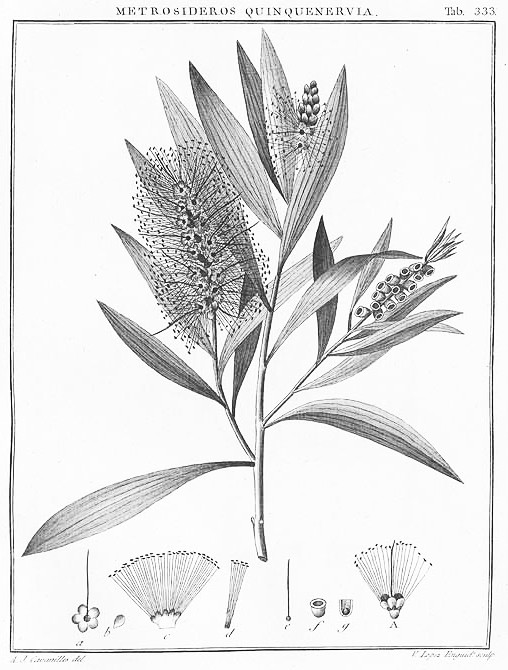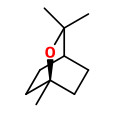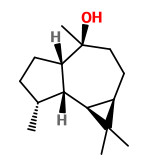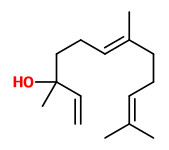Melaleuca quinquenervia S. T. Blake - syn.Metrosideros quinquenervia Cav. - Myrtaceae - broad-leaved paperbark, niaouli, Niaouli
Tree up to 20 m high, native to New Caledonia; trunk covered by a beige and grey thick papery bark.
Niaouli oil, the essential oil prepaired from the leaves by steam distillation, is used in aromatherapy.
„Factorial discriminant analysis revealed the presence of four chemotypes: a chemotype having a high content of 1,8-cineole (37%); a chemotype relatively rich in 1,8-cineole (23%), viridiflorol (20%), and terpinolene (5%); a viridiflorol (48%) chemotype; and an (E)-nerolidol (87%) chemotype. The seasonal influence is negligible versus the chemical compound content of the chemotypes. The 1,8-cineole and (E)-nerolidol chemotypes
represent 70% of the tree population.“
[Occurrence of Various Chemotypes in Niaouli (Melaleuca quinquenervia) Essential Oils from Madagascar Using Multivariate Statistical Analysis. Panja A. R. Ramanoelina, Josette Viano, Jean-P. Bianchini, Emile M. Gaydou, J. Agric. FoodChem. 1994, 42, 1177-1182]
The niaouli oil-producing Melaleuca viridiflora grows in North and West Australia and is grown in plantations in New Guinea and Vietnam. Concerning the composition of niaouli oil and data presented thereof, delineation of M. viridiflora to M. quinquenervia is often not made and there are also several chemotypes. Niaouli oils traded often come from New Caledonia or Madagascar, and contain cineol in the range of 35-65%. Other important components are the monoterpenes α-pinene, β-pinene, limonene, and α-terpineol as well as the sesquiterpene viridiflorol. There are also niaouli oils with low cineol content, but rich in nerolidol, linalool or viridiflorol.
[Galle-Hoffmann, U., and W. A. König. „Weitere Teebaumöle aus der Gattung Melaleuca.“, Deutsche Apotheker Zeitung 139 (50), 1999, 53-56] https://www.deutsche-apotheker-zeitung.de/daz-az/1999/daz-50-1999/uid-1525
„An examination of the leaf oils of Melaleuca quinquenervia over its geographical range in Australia and Papua New Guinea has shown wide variation in chemical composition but only two major chemotypes. Chemotype 1 is comprised of E-nerolidol (74-95%) and linalool (14-30%) and is found from Sydney, north along the east coast of Australia to Selection Flat, New South Wales, with an isolated occurrence near Maryborough, Queensland. Two divisions occur in this chemotype which are based on the presence or absence of significant proportions of linalool (14-40%). Chemotype 2 contains 1,8-cineole (10-75%), viridiflorol (13-66%), α-terpineol (0.5-14%) and β-caryophyllene (0.5-28%) in varying proportions and order of dominance in the oils. It is found throughout the distribution of the species, from Sydney to Papua New Guinea and New Caledonia. Within chemotype 2 there appears to be a continuous spread of oil composition without formation of any further discrete divisions as in chemotype 1.
Analyses have shown that M. quinquenervia trees that occur at latitudes south of 25°S have high oil yields (1-3% w/w%, fresh leaves) and comprise chemotypes 1 and 2. North of 25°S, however, chemotype 1 does not occur and oil yields amongst the Australian populations are uniformly low (0.1-0.2%).“
[(2002). Chemical variation in the leaf essential oil of Melaleuca quinquenervia (Cav.) ST Blake. Ireland, B. F., Hibbert, D. B., Goldsack, R. J., Doran, J. C., & Brophy, J. J., Biochemical systematics and ecology, Vol.30(5), 2002, 457-470]
„The essential oil of Melaleuca quinquenervia is used in a variety of cosmetic products especially in Australia. The oil is reported in herbalism and natural medicine to work as an antiseptic and antibacterial agent, to help with bladder infections, respiratory troubles and catarrh.“ http://en.wikipedia.org/wiki/Melaleuca_quinquenervia

Melaleuca quinquenervia (Cav.) S.T.Blake [as Metrosideros quinquenervia Cav.]
Cavanilles, A.J., Icones et descriptiones plantarum, vol. 4: t. 333 (1797) [A.J. Cavanilles]
http://plantgenera.org/species.php?id_species=652581



